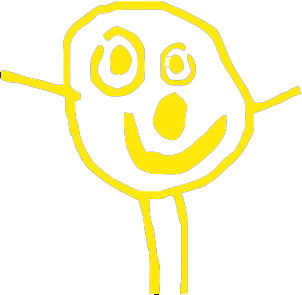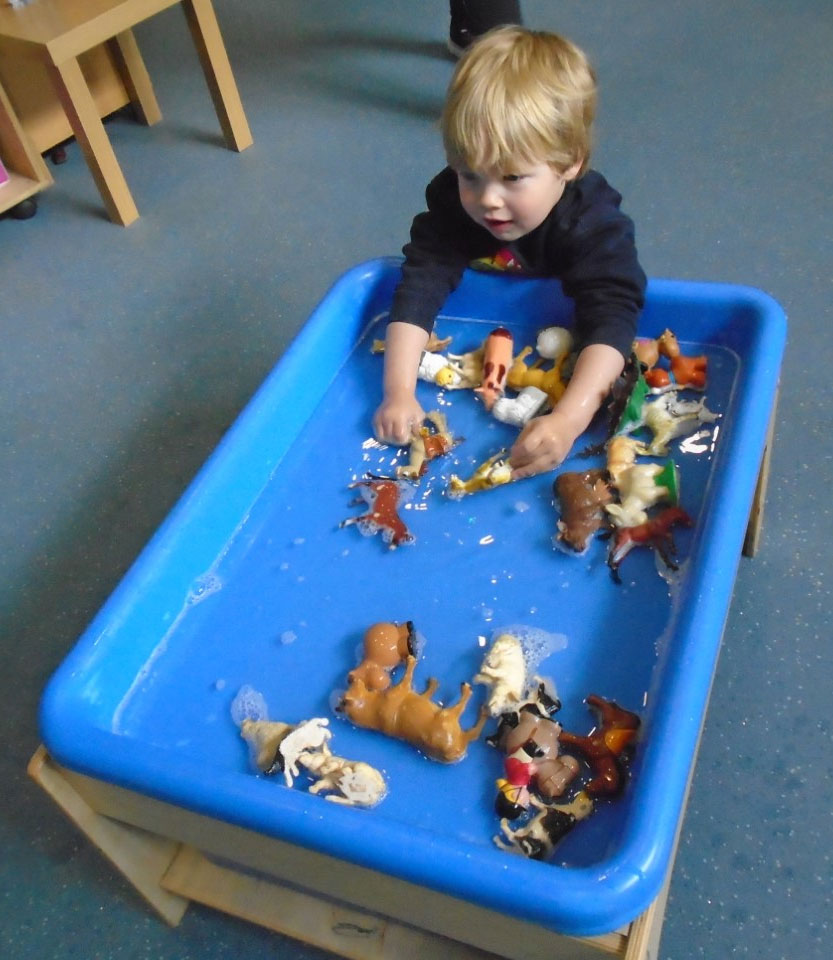Curriculum in the Early Years
The Early Years Foundation Stage (EYFS) sets standards for learning and development and care of children from birth to 5 years old.
The Early Years Foundation Stage framework supports an integrated approach to early learning and care. It gives all professionals a set of common principles and commitments to deliver quality early education and childcare experiences to all children.
As well as being the core document for all professionals working in the foundation years, the EYFS framework gives families confidence to be assured that the commitments and principles of the EYFS will underpin their child’s learning and development experience.
Children’s play is complex. However, an enabling environment ensures that children’s play quite naturally fulfils the EYFS learning and development requirements.
One of the best things of the EYFS is its identification of three prime areas of development.

Communication and Language Development…
Involves giving children opportunities to experience a rich language environment; to develop their confidence and skills in expressing themselves; and to speak and listen in a range of situations.
Physical Development…
Involves providing opportunities for young children to be active and interactive; and to develop their co-ordination, control and movement. Children must also be helped to understood the importance of physical activity, and to make healthy choices in relation to food.
Personal, Social and Emotional Development…
Involves helping children to develop a positive sense of themselves, and others; to form positive relationships and to develop respect for others; to develop social skills and learn how to manage their feelings; to understand appropriate behaviour in groups; and to have confidence in their own abilities.
These prime areas are most essential for your child’s healthy development and future learning. These are crucial in the early years, as they underpin all learning and development. As children grow, the prime areas will help them develop skills in the four specific areas.
They are:
Literacy Development involves encouraging children to link sounds and letters and to begin to read and write. Children must be given access to a wide range of reading material to ignite their interest.
Mathematics involves providing children with opportunities to develop and improve their skills in counting, understanding and using numbers, calculating simple addition and subtraction problems; and to describe shapes, spaces and measure.
Understanding the World involves guiding children to make sense of their physical world and their community through opportunities to explore, observe and find out about people, places, technology and the environment.
Expressive Arts and Design involves enabling children to explore and play with a wide range of media and materials, as well as providing opportunities and encouragement for sharing their thoughts, ideas and feelings through a variety of activities in art, music, movement, dance, role play, and design and technology.
These seven areas are used to plan your child’s learning and development. The professionals teaching and supporting your child will make sure that the activities are suited to your child’s unique needs.
The curriculum is designed to be very flexible so that staff can follow your child’s unique needs and interests.
Through the EYFS, children learn by playing and exploring, being active, and through creative and critical thinking, which takes place both indoors and outdoors.
Observation is still at the heart of the EYFS. Observing children’s play is the only accurate way for practitioners to assess development across all areas of learning and to gauge the right levels of interaction and support that will enhance and extend the learning experience.
The EYFS reminds us that play is essential for children’s development. When faced with ever increasing demands for school readiness at an increasing young age, we need to remind ourselves that children MUST play in order to develop. It is the very nature of play that is building and shaping their brains throughout the Early Years. Theorists have always told us – and now neuroscience confirms – that sensory stimulation builds the nerve networks that create the architecture of the brain. With the help of the attuned adults, children playing are instinctively responding to the sensory stimulation of everything around them.
That’s why the enabling environment is so important for development and learning. A truly enabling environment provides the stimulation and the positive relationships that support children to feel safe enough to explore. It has to be the kind of environment that allows children to ‘wallow’ and take as much time as they need:
- To be absorbed by what they do and to come back to it time after time.
- To be stimulated by the feel and smell of materials, the sounds they make and the mess that can be made with them.
- To make connections with what’s happened before.
- To follow a game through to a personal conclusion of their own choosing.
- To sit and watch others until they have a go themselves.
- To take risks and make mistakes and get up and have another go.
- To move freely indoors and out and to have the space to roll and jump and spin and dance whenever the mood takes them.
- To experiment with the language of numbers and begin to make sense of what they can do with them.
- To see comparisons all around them and to begin to understand why they matter.
- To have the space to build castles and zoos and villages and cities, and to populate them with dinosaurs and sheep and cars and people.
- To be able to leave these creations there till the next day and carry on the game and then knock them all down and start again.
- To curl up quietly in a corner and to be transported into the other worlds of a beautiful picture book or to create their own other worlds in a home corner – today it’s a shop, and tomorrow it’s a cave at the bottom of the sea.
- To write signs and notices for keeping adults out – or for inviting them to come and join in….
At Clapham Preschool we use the ‘Environmental Ratings” of both Infant and Toddlers Environmental Rating Scales (ITERS) and Early Childhood Environmental Rating Scales (ECERS). These scales are met by providing the environments for children to access much of the day.
Purchase Uniforms
Purchase your child’s uniform through our online shop.
Enrol Your Child
Enquire about enrolling your child at Clapham Preschool today.
Environments provided are:-
Role Play including music
Role play is how children make sense of their world, acting out experiences, ideas or stories. Imagination, which is at the heart of children’s role play, is more important than knowledge according to Einstein: “for knowledge is limited, whereas imagination embraces the entire world.” Role play takes place throughout the setting, indoors and out. It can be encouraged in a specific area where props to further role play are provided.
Book corner
Books have a tremendous influence on many areas of learning. They can introduce themes of friendship, diversity, and overcoming challenge, thus helping to develop character. They can expand children’s knowledge of the world, other people, cultures and traditions, or they can introduce imaginary themes. It is said that the best was to strengthen children’s intelligence is to read them fairly tales. The book corner should be in the quietest part of the room and include one small area for children who want solitary space.
Art/creative including design and technology
Arnold J.C. suggests “Art sharpens children’s powers of observation, and awakens them to the possibilities of their own hands, hearts and minds.” Art supplies are all accessible to children much of the day and they make their own choices of materials that they need. “
Wet play including science and discovery
Froebel F suggests “To have discovered a quarter of the answer to his own question is of more value to the child than to hear the whole answer, half-understood, from another.” Make sure sand and water trays are separate for children to experiment with both wet and dry materials.
Block Play including small world play
This area is very important in both ITERS and ECERS. The open-ended nature of blocks means there is no prescribed method or expected outcome. Children feel free to have a go, and each experiment encourages the next. Imagination flourishes, ideas multiply, confidence grows, and creative play becomes self-perpetuating.
Large motor play
McMillan M says “To move, to run, to find things out by new movement, to feel one’s life in every limb – that is the life of early childhood!” Large motor play can take place in their safe-crawl area as well as outdoors.
The Prime Areas
Communication and Language, Physical Development, Personal, Social and Emotional Development.
Our Approaches
Learning through Play, Assessment and Records of Achievement.
Curriculum In The Early Years
The Early Years Foundation Stage (EYFS) sets standards for learning and development and care of children from birth to 5 years old.
Contact Clapham Preschool
Address: King George Playing Field, High St, Clapham, Bedford MK41 6BS
Phone: 01234 341 142




Contact Details
Address:
King George Playing Field, High St, Clapham, Bedford MK41 6BS
Phone:
01234 341 142





